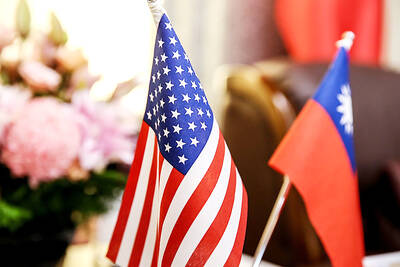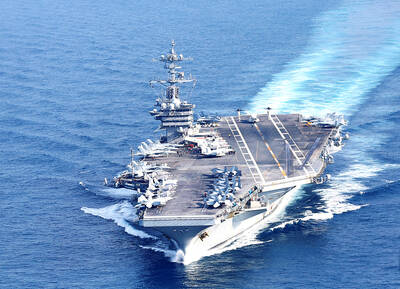Coca-Cola Co’s US$2.3 billion bid for China Huiyuan Juice Group Ltd (匯源果汁) was blocked by the Chinese Ministry of Commerce on monopoly concerns.
“After the merger, Coca-Cola may use its dominant position” to limit competition in China’s juice market, the agency said in a statement on its Web site yesterday.
The takeover would have been the biggest foreign takeover of a Chinese company.
The decision will cost Coca-Cola, the world’s biggest soft-drink maker, the opportunity to boost its share of China’s juice market to more than 20 percent. China’s fruit and vegetable-juice sales may rise 20 percent to 97.1 billion yuan (US$14 billion) this year, almost double the rate for carbonated drinks, according to Euromonitor International.
“Beijing wants to protect its own brands,” said Renee Tai, Hong Kong-based food and beverage analyst at CIMB-GK Securities (HK) Ltd. “Drinks are not politically sensitive products, but it’s purely political.”
An acquisition of Huiyuan would have helped Coca-Cola chief executive officer Muhtar Kent maintain the company’s lead over Pepsico Inc as US soda sales slow. Coca-Cola’s sales by volume rose 19 percent last year in China and declined by 1 percent in North America.
Coca-Cola had 15 percent of China’s packaged-beverage market in 2007 compared with Pepsi’s 6 percent, according to Euromonitor. Coca-Cola controlled 54 percent of the Chinese soda market to Pepsi’s 31 percent. Coca-Cola had 10 percent of the fruit and vegetable-juice market while Pepsi’s share was too small to be counted.
Coca-Cola proposed to purchase Huiyuan for at least US$2.3 billion in September, in what would have been the Atlanta-based company’s biggest overseas acquisition. The cost of the deal could have risen to HK$19.6 billion (US$2.5 billion) depending on whether Huiyuan bonds are converted into shares, the Hong Kong-listed juice maker said.
Coca-Cola said on March 6 it plans to invest US$2 billion in China over the next three years to win more of the country’s 1.3 billion consumers. The beverage maker said it had already spent US$1.6 billion investing in China since returning in 1979.
Apart from Coca-Cola, Sprite and Minute Maid, the Atlanta- based beverage maker also sells Yuan Ye, a green tea drink, in China. The carbonated drinks market may grow 11 percent to 74 billion yuan this year, Euromonitor said.

CROSS-STRAIT COLLABORATION: The new KMT chairwoman expressed interest in meeting the Chinese president from the start, but she’ll have to pay to get in Beijing allegedly agreed to let Chinese Nationalist Party (KMT) Chairwoman Cheng Li-wun (鄭麗文) meet with Chinese President Xi Jinping (習近平) around the Lunar New Year holiday next year on three conditions, including that the KMT block Taiwan’s arms purchases, a source said yesterday. Cheng has expressed interest in meeting Xi since she won the KMT’s chairmanship election in October. A source, speaking on condition of anonymity, said a consensus on a meeting was allegedly reached after two KMT vice chairmen visited China’s Taiwan Affairs Office Director Song Tao (宋濤) in China last month. Beijing allegedly gave the KMT three conditions it had to

STAYING ALERT: China this week deployed its largest maritime show of force to date in the region, prompting concern in Taipei and Tokyo, which Beijing has brushed off Deterring conflict over Taiwan is a priority, the White House said in its National Security Strategy published yesterday, which also called on Japan and South Korea to increase their defense spending to help protect the first island chain. Taiwan is strategically positioned between Northeast and Southeast Asia, and provides direct access to the second island chain, with one-third of global shipping passing through the South China Sea, the report said. Given the implications for the US economy, along with Taiwan’s dominance in semiconductors, “deterring a conflict over Taiwan, ideally by preserving military overmatch, is a priority,” it said. However, the strategy also reiterated

‘BALANCE OF POWER’: Hegseth said that the US did not want to ‘strangle’ China, but to ensure that none of Washington’s allies would be vulnerable to military aggression Washington has no intention of changing the “status quo” in the Taiwan Strait, US Secretary of Defense Pete Hegseth said on Saturday, adding that one of the US military’s main priorities is to deter China “through strength, not through confrontation.” Speaking at the annual Reagan National Defense Forum in Simi Valley, California, Hegseth outlined the US Department of Defense’s priorities under US President Donald Trump. “First, defending the US homeland and our hemisphere. Second, deterring China through strength, not confrontation. Third, increased burden sharing for us, allies and partners. And fourth, supercharging the US defense industrial base,” he said. US-China relations under

The Chien Feng IV (勁蜂, Mighty Hornet) loitering munition is on track to enter flight tests next month in connection with potential adoption by Taiwanese and US armed forces, a government source said yesterday. The kamikaze drone, which boasts a range of 1,000km, debuted at the Taipei Aerospace and Defense Technology Exhibition in September, the official said on condition of anonymity. The Chungshan Institute of Science and Technology and US-based Kratos Defense jointly developed the platform by leveraging the engine and airframe of the latter’s MQM-178 Firejet target drone, they said. The uncrewed aerial vehicle is designed to utilize an artificial intelligence computer